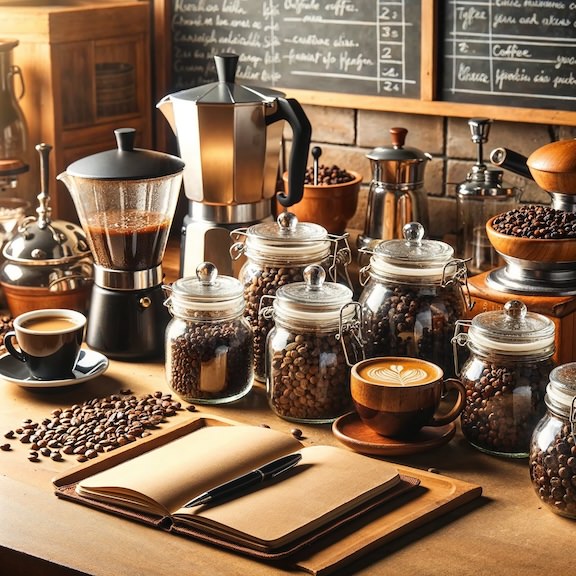As a self identified coffee enthusiast, I look for ways to enhance the brewing experience and better understand what made a cup of coffee memorable, or not. In order to try and repeat an enjoyable experience, I have started to maintain a detailed coffee journal, though you may wish to go with a database. A systematic approach to recording various aspects of a coffee brewing allows me to capture a wide range of data for each cup you brew. By documenting factors such as the type of coffee beans, grind size, brewing method, water temperature, brewing time, and the coffee-to-water ratio, I am creating a comprehensive profile of each brewing session.
This is not just about tracking the technical details; it’s also about engaging more deeply with my coffee experience. Recording tasting notes, such as flavor, acidity, body, and aftertaste, as well as my personal rating, helps with an understand of what works best for my palate. Additionally, noting additional ingredients like milk, syrup or sugar can impact the overall experience. Even including how I felt that day, provide insights into how external factors influence the coffee enjoyment.
If you want to try to hone in on what made a cup better than another, you may want to try logging what made up that coffee. Whether you choose a physical notebook or a digital spreadsheet, this practice helps you refine your brewing techniques, discover your preferences, and consistently recreate the coffee drinks you love the most. Here is an extensive list of the possible things to record, you may want to lessen it if you need to not take too much time making a record.
– Date and Time: This helps to track your coffee consumption pattern and preferences over different times of the day or year.
– Coffee Bean Type: Include the name, origin, roast level, and any other specific details about the beans.
– Grind Size: Note the coarseness or fineness of the coffee grind, as this can significantly impact the flavor.
– Brewing Method: Record the method used (e.g., drip, French press, espresso, pour-over, etc.), as different methods extract flavors differently.
– Water Temperature: The temperature of the water can affect the extraction process.
– Brewing Time: How long the coffee was brewed or steeped.
– Coffee-to-Water Ratio: The amount of coffee used in relation to the amount of water.
– Tasting Notes: Describe the flavor, acidity, body, and aftertaste. You can be as detailed as you like here.
– Personal Rating: Rate each brew based on your personal preference.
– Additional Ingredients: If you add milk, sugar, syrups, or any other additives, note their types and quantities.
– Overall Experience: Include any notes about the brewing process or how you felt that day, as mood can also affect taste perception.
To record these details, make it easy on yourself so you do it regularly. You can either use a physical notebook dedicated to your coffee journey, or create a digital spreadsheet or database, there are also apps for your phone to creating a database or spreadsheet. Digital tools have the advantage of being searchable and sortable, which can be helpful when you want to find patterns or repeat a particularly enjoyable brew.
Remember, the goal is to enjoy the process as much as the coffee itself, so feel free to adjust the level of detail to what feels most enjoyable and useful for you.
Please note that if you purchase from clicking on the link, some will result in my getting a tiny bit of that sale to help keep this site going. If you enjoy my work, perhaps you would consider donating to my daily cup of coffee, thank you.

